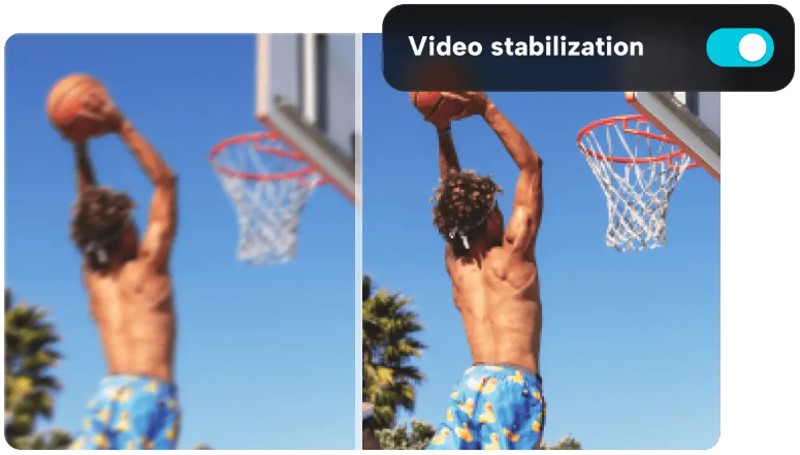In the ever-evolving world of content creation, the quest for high-quality video production has become paramount. Content creators, including those using a YouTube video editor, continuously grapple with the need for stable and smooth footage. Shaky and jittery video not only diminishes the overall quality of content but also leads to viewer discomfort and reduced engagement. To address these challenges, advanced video stabilization techniques have emerged, offering creators powerful tools to enhance the quality of their videos significantly. In this forward-looking article, we’ll embark on a journey into the future of advanced video stabilization, exploring emerging trends and technologies that extend beyond brand promotion.
The Significance of Stable Footage
At the heart of advanced video stabilization lies the fundamental importance of stable footage. It serves as the canvas upon which content creators paint their narratives and stories. Stable footage is not merely a technical requirement; it’s the foundation of captivating and immersive content.
Shaky footage can be a creative bottleneck, limiting the possibilities of what creators can achieve. Whether you’re a filmmaker capturing a critical scene or a vlogger documenting your travels, the quality of your footage profoundly impacts the viewer’s experience.
Viewer discomfort is a significant concern. As audiences engage with content on larger screens and through immersive technologies like virtual reality, the effects of shaky video become even more pronounced. Motion sickness, eye strain, and disorientation can all result from unstable footage, leading to viewer dissatisfaction.
Moreover, shaky video jeopardizes viewer engagement. Modern viewers have a plethora of choices, and their attention spans are finite. When viewers encounter shaky footage, they are more likely to abandon the content in favor of smoother alternatives. Thus, creators risk losing their audience if they neglect the importance of video stabilization.
Benefits of Video Stabilization Tool
The benefits of advanced video stabilization techniques extend far beyond simple visual improvements. Here are some key advantages:
- Enhanced Viewer Experience: Stable footage ensures that viewers can watch content comfortably without experiencing motion sickness or discomfort. This leads to longer watch times, increased engagement, and higher viewer retention.
- Professionalism: Stabilized videos exude professionalism, making content creators appear more skilled and reputable. This can attract a larger and more dedicated audience, potentially opening up opportunities for collaborations and partnerships.
- Improved Accessibility: Stable footage is more accessible to a wider audience, including individuals who may have motion-related sensitivities or disabilities. Creating content that accommodates various viewers is not only ethical but also beneficial in terms of reach and impact.
- Increased Viewer Trust: Viewers are more likely to trust and engage with content that appears professional and well-crafted. Stable footage instills confidence in the content and the creator, leading to a more positive perception and higher credibility.
- Time and Cost Savings: Automated stabilization tools can save creators time and effort compared to manual stabilization. This is particularly valuable for content creators on tight schedules or those looking to produce content efficiently.
The Evolution of Artificial Intelligence in Stabilization
Artificial intelligence (AI) is set to revolutionize the field of video stabilization. AI-powered algorithms will become increasingly sophisticated, enabling real-time analysis and instantaneous adjustments to optimize stabilization. This integration of AI promises to simplify the process for creators, making stabilization more accessible and enhancing the quality of stabilized footage.
- Immersive VR and AR Experiences: The rise of virtual reality (VR) and augmented reality (AR) has introduced new challenges for video stabilization. These immersive mediums demand even greater stability to prevent discomfort and motion sickness among users. As VR and AR content become more prevalent, advanced stabilization techniques will play a pivotal role in shaping the future of these immersive experiences.
- 360-Degree Video Stabilization: 360-degree videos have gained popularity, offering viewers a unique and immersive perspective. However, stabilizing content in a 360-degree format presents its own set of challenges. Advanced stabilization techniques will be vital in ensuring a seamless viewing experience for audiences as they navigate these panoramic environments, enabling creators to craft immersive narratives and educational content.
- Cross-Platform Compatibility: Content is consumed across a spectrum of platforms and devices, from traditional screens to mobile devices and emerging technologies. Future video stabilization techniques will need to adapt to meet the demands of various viewing contexts, ensuring that stabilized content remains consistent and effective regardless of the platform.
- Enhanced Real-Time Stabilization: Real-time stabilization is becoming increasingly important, particularly for live streaming and mobile content creation. The future will see the development of advanced real-time stabilization solutions that cater to the needs of creators who require stability on the go, ensuring that live content maintains a professional quality.
- Machine Learning for Personalized Stabilization: Machine learning algorithms will be employed to analyze individual creator preferences and adapt stabilization techniques accordingly. This personalization will allow creators to fine-tune stabilization to match their unique styles and content goals, resulting in more customized and engaging videos.
- Collaborative Stabilization Workflows: As the world of content creation becomes more collaborative, future stabilization techniques will incorporate features that facilitate teamwork. Creators working together on projects will have tools to streamline the stabilization process, ensuring consistency and coherence across multiple contributors.

Conclusion
The horizon of advanced video stabilization beckons with exciting prospects and innovations that are set to redefine the way content creators craft their videos. As we conclude our exploration into the future of video stabilization, it becomes evident that these advancements are not just incremental improvements but rather transformative leaps that will reshape the landscape of content creation.
Moreover, as virtual reality (VR) and augmented reality (AR) continue to gain traction, the demand for enhanced stabilization will rise. Immersive experiences require even greater stability to prevent viewer discomfort and motion sickness, making advanced stabilization techniques indispensable for the future of these mediums. Content creators venturing into the realms of VR and AR will rely on these techniques to ensure that their audiences can explore these digital realms comfortably and without distraction.
Machine learning algorithms will further personalize stabilization. These algorithms will analyze individual creator preferences and adapt stabilization techniques accordingly. Creators will have the ability to fine-tune stabilization to match their unique styles and content goals. The result will be more customized and engaging videos that resonate more deeply with viewers.

